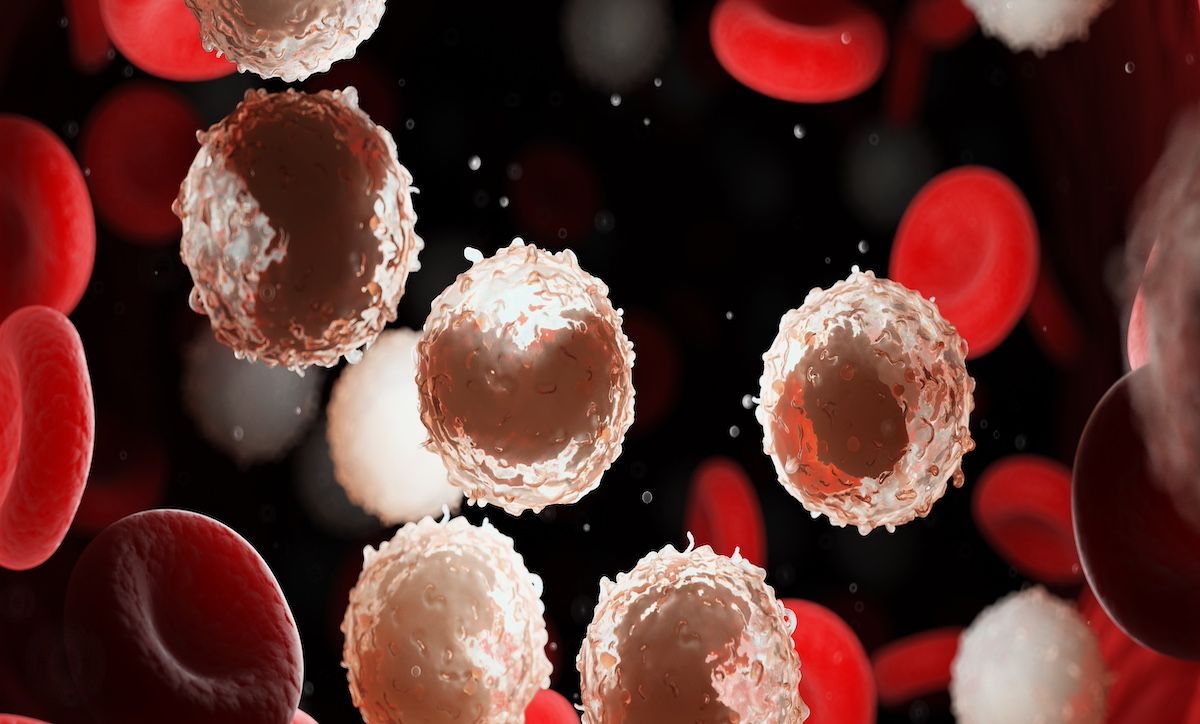News
Article
Ponatinib, Imatinib Face Off, but Still Room for TKI Improvement in Ph+ ALL
Author(s):
Interim results of the randomized, phase 3 PhALLCON trial indicate ponatinib’s benefit over imatinib in frontline treatment of Philadelphia chromosome–positive acute lymphoblastic leukemia (Ph+ ALL), but questions linger about ponatinib’s long-term safety.
New strides have been made in the quest to overcome a major challenge in treating Philadelphia chromosome–positive (Ph+) acute lymphoblastic leukemia (ALL): the disease progression that frequently occurs due to acquired resistance to first- ors econd-generation BCR::ABL1 tyrosine kinase inhibitors (TKIs). Ponatinib, a third-generation TKI, inhibits BCR::ABL1 and all single-mutation variants, including T315I. In the randomized, open-label phase 3 PhALLCON trial, researchers are comparing frontline ponatinib with imatinib (the first BCR::ABL1 TKI), both combined with reduced-intensity chemotherapy, in adults with newly diagnosed Ph+ ALL.
Median EFS was not reached in the ponatinib arm vs 29 months in those taking imatinib. | Image Credit: © SebastianKaulitzki - stock.adobe.com

In interim analysis results presented in JAMA, the team stated that overall, ponatinib had superior efficacy to imatinib, and similar safety.1 Given those results, the FDA granted ponatinib accelerated approval in March 2024 for this indication.2
Achieving minimal residual disease (MRD) negativity in the first 3 months of TKI treatment has a correlation with superior long-term survival outcomes,3 the authors noted.1 The primary end point of this interim analysis was MRD-negative complete remission (CR), with CR maintained for at least 4 weeks at the end of cycle 3. Indeed, the MRD-negative CR rate was significantly higher with ponatinib (34.4%) vs imatinib (16.7%; P = .002).
The analysis involved 232 adult patients worldwide (median age, 54 years) randomized 2:1 to ponatinib (30 mg/day; n = 154) or imatinib (600 mg/day; n = 78) with reduced-intensity chemotherapy. This was followed by single-agent ponatinib or imatinib after the cycle 20 phase of the trial, the authors explained, adding that the ponatinib dose was reduced to 15 mg/day when a patient achieved MRD-negative CR.
The key secondary end point was event-free survival (EFS), and at data cutoff, EFS trended favorably toward the newer TKI, although it had not met the prespecified number of events. Median EFS was not reached in the ponatinib arm vs 29 months in those taking imatinib.
Regarding safety, the most common adverse events (AEs) were similar between the 2 groups. And, the authors pointed out, arterial occlusive events were infrequent and similar between the arms as well: 2.5% vs 1.2% for ponatinib and imatinib, respectively.
However, the issue of arterial occlusive events—a known AE of ponatinib—was a focus of an editorial appearing in the same issue of JAMA in which other experts discussed these interim study findings.4 Ponatinib “may not be the optimal first choice for all Ph+ ALL patients,” they wrote, although they agreed that “early results are positive.”
However, given that PhALLCON excluded patients with poorly controlled diabetes, hypertension, or a prior cardiovascular or venous thromboembolic condition, it may turn out that “these exclusion criteria may limit ponatinib’s broad applicability.” Also, in part because of those eligibility rules, and perhaps, the editorial writers posited, because clinicians had concerns about older patients participating in the trial, just 37% of enrolled patients were 60 years or older.
The JAMA editorial also pointed out that another option may be on the horizon that wouldn’t include even reduced-intensity chemotherapy. “Long-term data are emerging that demonstrate durable hematologic and molecular responses with combined dasatinib and blinatumomab,” the authors continued, offering a “toxicity-sparing induction and consolidation regimen.”
Further, they noted that PhALLCON offered no comparative information regarding ponatinib vs a second-generation TKI, nor the effect of regimens that incorporate early blinatumomab. And finally, they stressed, long-term PhALLCON follow-up is essential because “vascular toxicities accrue over time…[and] occlusive events can emerge as late as 5 years after therapy.”
References
1. Jabbour E, Kantarjian HM, Aldoss I, et al. Ponatinib vs imatinib in frontline Philadelphia chromosome-positive acute lymphoblastic leukemia: a randomized clinical trial. JAMA. Published online May 9, 2024. doi:10.1001/jama.2024.4783
2. McNulty R. FDA grants accelerated approval to ponatinib plus chemotherapy in first-line Ph+ ALL. AJMC®. March 19, 2024. Accessed May 22, 2024. https://www.ajmc.com/view/fda-grants-accelerated-approval-to-ponatinib-plus-chemotherapy-in-first-line-ph-all
3. Short NJ, Jabbour E, Sasaki K, et al. Impact of complete molecular response on survival in patients with Philadelphia chromosome-positive acute lymphoblastic leukemia. Blood. 2016;128(4):504-507. doi:10.1182/blood-2016-03-707562
4. Bystrom RP, DeAngelo DJ, Garcia JS. PhALLCON soars to new heights—faster, stronger, but better? JAMA. Published online May 9, 2024. doi:10.1001/jama.2024.5871




